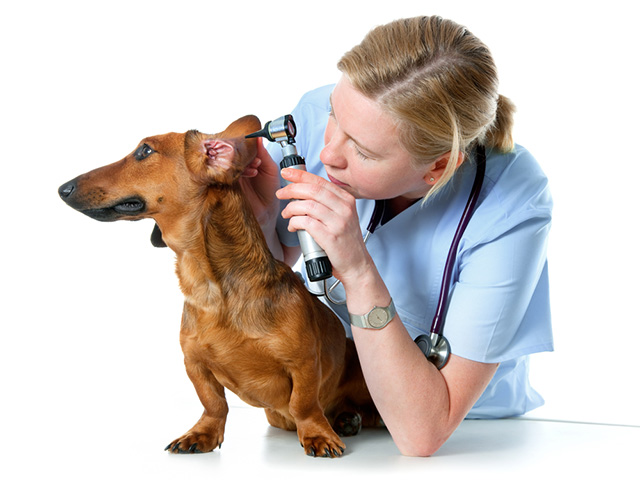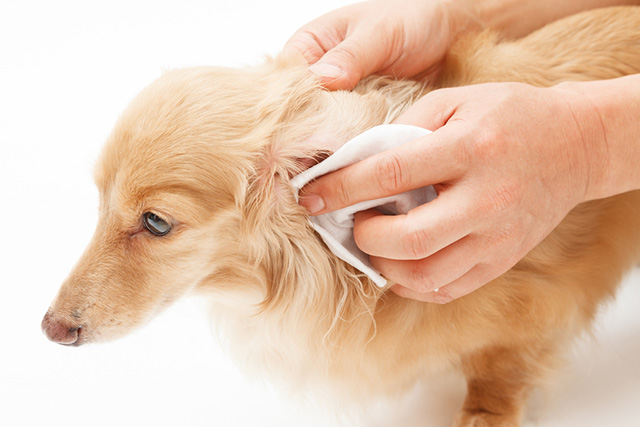Healthy ears should be clean, odour-free, pale pink in colour and with a minimal accumulation of wax. You should check your dog’s ears regularly.
Ear disease in dogs
Some breeds of dog are more susceptible to ear infection than others, including dogs with pendulous ears, for example the cocker spaniel, or dogs with hairy inner ear flaps. Dogs prone to allergies are also at risk.
Unlike the human ear, your pet’s ear canal is an L shape – deep and curved. This means the dirt and wax can accumulate and moisture becomes trapped. This is further complicated by heavy droopy ears – such as those seen in Springer Spaniels, as it is difficult for air to circulate. This provides an ideal environment for the growth of bacteria and yeasts.

Preventing ear problems in dogs
Using an ear cleaning solution on an appropriate basis can be helpful in keeping your dog’s ears healthy although this should be only done with guidance from your veterinarian as this could make an ear condition worse in some instances!

How to put ear drops or ointment in your dog’s ears:
- Clean the external ear thoroughly with a moistened cotton ball using a veterinary-recommended solution – NEVER use water or a non-veterinary approved product
- Gently pull the ear flap towards you and over the head in order to straighten the ear canal prior to applying the medication
- Drop the medication into the lowest opening of the ear canal. Always ensure the right amount of medication is applied as insufficient amounts may not treat a condition properly.
- Gently massage the ear area to help work the medication deeper into the ear canal. If there is enough medication in the ear, you will just begin to hear a ‘squishing’ noise as you massage. If you don’t hear this noise then you have not applied enough medication
